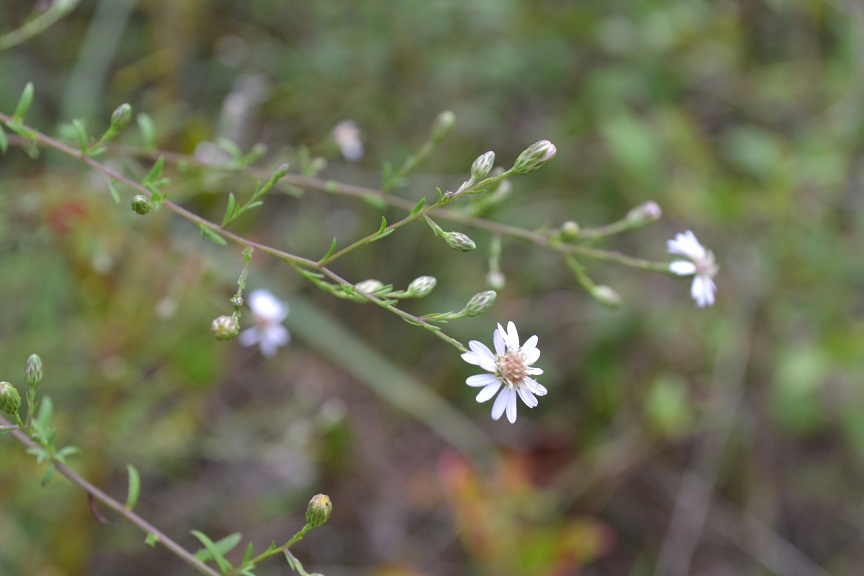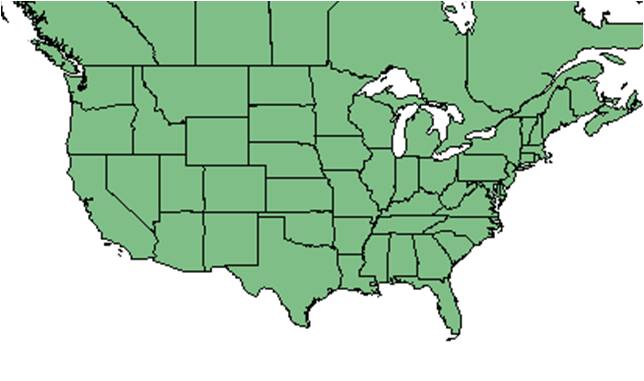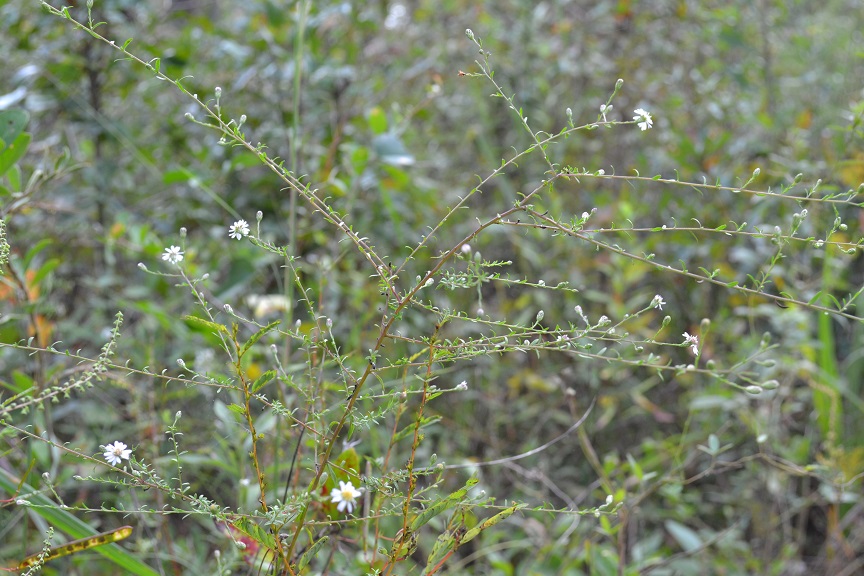Difference between revisions of "Conyza canadensis"
(→Seed dispersal) |
|||
| Line 30: | Line 30: | ||
<!--===Habitat===--> <!--Natural communities, human disturbed habitats, topography, hydrology, soils, light, fire regime requirements for removal of competition, etc.--> | <!--===Habitat===--> <!--Natural communities, human disturbed habitats, topography, hydrology, soils, light, fire regime requirements for removal of competition, etc.--> | ||
===Phenology===<!--Timing off flowering, fruiting, seed dispersal, and environmental triggers. Cite PanFlora website if appropriate: http://www.gilnelson.com/PanFlora/ --> | ===Phenology===<!--Timing off flowering, fruiting, seed dispersal, and environmental triggers. Cite PanFlora website if appropriate: http://www.gilnelson.com/PanFlora/ --> | ||
| − | + | ''C. canadensis'' has been observed to flower in June.<ref>Nelson, G. [http://www.gilnelson.com/ PanFlora]: Plant data for the eastern United States with emphasis on the Southeastern Coastal Plains, Florida, and the Florida Panhandle. www.gilnelson.com/PanFlora/ Accessed: 8 DEC 2016</ref> | |
| + | |||
===Seed dispersal=== | ===Seed dispersal=== | ||
This species is thought to be dispersed by wind. <ref>Kirkman, L. Katherine. Unpublished database of seed dispersal mode of plants found in Coastal Plain longleaf pine-grasslands of the Jones Ecological Research Center, Georgia.</ref> | This species is thought to be dispersed by wind. <ref>Kirkman, L. Katherine. Unpublished database of seed dispersal mode of plants found in Coastal Plain longleaf pine-grasslands of the Jones Ecological Research Center, Georgia.</ref> | ||
Revision as of 19:31, 12 September 2018
| Conyza canadensis | |
|---|---|

| |
| Photo taken by Kevin Robertson | |
| Scientific classification | |
| Kingdom: | Plantae |
| Division: | Magnoliophyta - Flowering plants |
| Class: | Magnoliopsida - Dicotyledons |
| Order: | Asterales |
| Family: | Asteraceae ⁄ Compositae |
| Genus: | Conyza |
| Species: | C. canadensis |
| Binomial name | |
| Conyza canadensis (L.) Cronquist | |

| |
| Natural range of Conyza canadensis from USDA NRCS Plants Database. | |
Common name: Canadian horseweed
Contents
Taxonomic notes
Synonyms: Erigeron canadensis Linnaeus; Conyza canadensis var. glabrata (A. Gray) Cronquist; C. canadensis var. pusilla (Nuttall) Cronquist; C. parva Cronquist; Erigeron canadensis var. pusillus (Nuttall) B. Boivin The Flora of North America.
Description
A description of Conyza canadensis is provided in The Flora of North America.
Distribution
Ecology
Phenology
C. canadensis has been observed to flower in June.[1]
Seed dispersal
This species is thought to be dispersed by wind. [2]
Seed bank and germination
C. canadensis was found in the seed bank of scrub, longleaf pine, and ecotone habitats in the western panhandle region of Florida. [3]
Pollination
The following Hymenoptera families and species were observed visiting flowers of Conyza canadensis at Archbold Biological Station. [4]
Andrenidae: Andrena fulvipennis
Apidae: Epeolus carolinus
Halictidae: Sphecodes heraclei
Leucospididae: Leucospis affinis
Pompilidae: Episyron conterminus posterus
Sphecidae: Anacrabro ocellatus, Cerceris blakei, Ectemnius rufipes ais, Microbembex monodonta, Pluto rufibasis, Tachysphex apicalis, T. similis
Vespidae: Pachodynerus erynnis, Parancistrocerus salcularis rufulus, Stenodynerus beameri, S. fundatiformis, S. histrionalis rufustus
Conservation and management
Cultivation and restoration
Photo Gallery
References and notes
- ↑ Nelson, G. PanFlora: Plant data for the eastern United States with emphasis on the Southeastern Coastal Plains, Florida, and the Florida Panhandle. www.gilnelson.com/PanFlora/ Accessed: 8 DEC 2016
- ↑ Kirkman, L. Katherine. Unpublished database of seed dispersal mode of plants found in Coastal Plain longleaf pine-grasslands of the Jones Ecological Research Center, Georgia.
- ↑ Ruth, A. D., et al. 2008. Seed bank dynamics of sand pine scrub and longleaf pine flatwoods of the Gulf Coastal Plain (Florida). Ecological Restoration 26:19-21.
- ↑ Deyrup, M.A. and N.D. 2015. Database of observations of Hymenoptera visitations to flowers of plants on Archbold Biological Station, Florida, USA.
